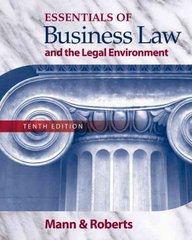Question
A sculpture is auctioned using a first-price, sealed bid auction. Two museums are interested in this sculpture and they are participating in the auction. We
A sculpture is auctioned using a first-price, sealed bid auction. Two museums are interested in this sculpture and they are participating in the auction. We refer to them as Museum A and Museum B. In addition to the rules for determining the winned in a first-price sealed bid auction, this auction has an additional rule: submitted bids must be multiples of 100. So the set of allowed bids is 0,100,200,300,400,500 and so on. Each museum's valuation for the sculpture is 200 with probability 0.5 and 300 with probability 0.5. The sculpture will be awarded to the bidder who submits the highest bid. If both museums submit the same bid then the auctioneer will flip a coin to determine the winner. Each museum's payoff is the difference between its valuation and its bid if the museum wins the auction and zero if the museum loses. a) Determine whether the following strategy profile forms a symmetric Bayesian Nash equilibrium: a museum bids 100 if its valuation is 200 and bids 200 if its valuation is 300.
Step by Step Solution
There are 3 Steps involved in it
Step: 1

Get Instant Access to Expert-Tailored Solutions
See step-by-step solutions with expert insights and AI powered tools for academic success
Step: 2

Step: 3

Ace Your Homework with AI
Get the answers you need in no time with our AI-driven, step-by-step assistance
Get Started


